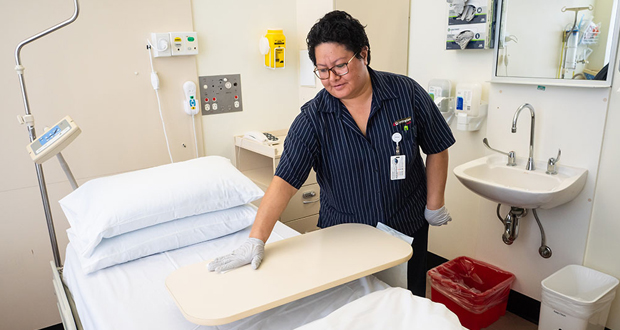A trial of new cleaning guidelines used in Australian hospitals has significantly reduced major healthcare-associated infections.
Trialled over 11 hospitals, cleaning practices improved from 55 to 76 per cent in bathroom areas and from 64 to 86 per cent in bedroom areas.
The cleaning was inspected by marking surfaces with invisible fluorescent markers that could only be removed with the new cleaning techniques.
The Researching Effective Approaches to Cleaning Hospitals (REACH) study, led by QUT health economist Peter Graves, resulted in a 37 per cent drop in major infection – vancomycin-resistance enterococci – and a 5.8 per cent decrease overall in three types of infections.
“This research project is believed to be the largest prospective, multi-site and multifactorial trial of hospital cleaning in the world,” Graves said.
“Its aim primarily was to investigate whether a change in cleaning practices was effective in reducing the 165,000 healthcare-associated infections in Australia each year.”
The hospitals involved actively promoted the importance of cleaning with a view to creating a cultural shift and, according to Graves, the REACH cleaning bundle is broadly applicable to any hospital.
“In contrast to previous research, the cleaning bundle development prioritised evidence-based strategies that were easy to implement and lower cost over newer expensive technologies,” said Graves.
“Overall, the cleaning bundle cost approximately $2,500 per 10,000 bed days to implement in participating hospitals.”
Do you have an idea for a story?Email [email protected]
 Aged Care Insite Australia's number one aged care news source
Aged Care Insite Australia's number one aged care news source

